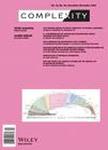版权所有:内蒙古大学图书馆 技术提供:维普资讯• 智图
内蒙古自治区呼和浩特市赛罕区大学西街235号 邮编: 010021

作者机构:Guangdong Univ Technol Sch Automat Guangzhou 510006 Guangdong Peoples R China Chinese Acad Sci Inst Automat State Key Lab Management & Control Complex Syst Beijing 100190 Peoples R China South Cent Univ Nationalities Hubei Key Lab Intelligent Wireless Commun Wuhan 430074 Hubei Peoples R China
出 版 物:《COMPLEXITY》 (复杂性)
年 卷 期:2019年第2019卷第1期
核心收录:
学科分类:07[理学] 0701[理学-数学] 070101[理学-基础数学]
基 金:State Key Laboratory of Management and Control for Complex Systems, Institute of Automation, Chinese Academy of Sciences degree and graduate education reform project of Guangdong Province [2016JGXM_MS_26] foundation of key laboratory of machine intelligence and advanced computing of the Ministry of Education [MSC-201706A] higher education quality project of Guangdong Province higher education quality project of Guangdong University of Technology 400170044 400180004
主 题:Empirical mode decomposition
摘 要:In a complex electromagnetic environment, there are cases where the noise is uncertain and difficult to estimate, which poses a great challenge to spectrum sensing systems. This paper proposes a cooperative spectrum sensing method based on empirical mode decomposition and information geometry. The method mainly includes two modules, a signal feature extraction module and a spectrum sensing module based on K-medoids. In the signal feature extraction module, firstly, the empirical modal decomposition algorithm is used to denoise the signals collected by the secondary users, so as to reduce the influence of the noise on the subsequent spectrum sensing process. Further, the spectrum sensing problem is considered as a signal detection problem. To analyze the problem more intuitively and simply, the signal after empirical mode decomposition is mapped into the statistical manifold by using the information geometry theory, so that the signal detection problem is transformed into geometric problems. Then, the corresponding geometric tools are used to extract signal features as statistical features. In the spectrum sensing module, the K-medoids clustering algorithm is used for training. A classifier can be obtained after a successful training, thereby avoiding the complex threshold derivation in traditional spectrum sensing methods. In the experimental part, we verified the proposed method and analyzed the experimental results, which show that the proposed method can improve the spectrum sensing performance.